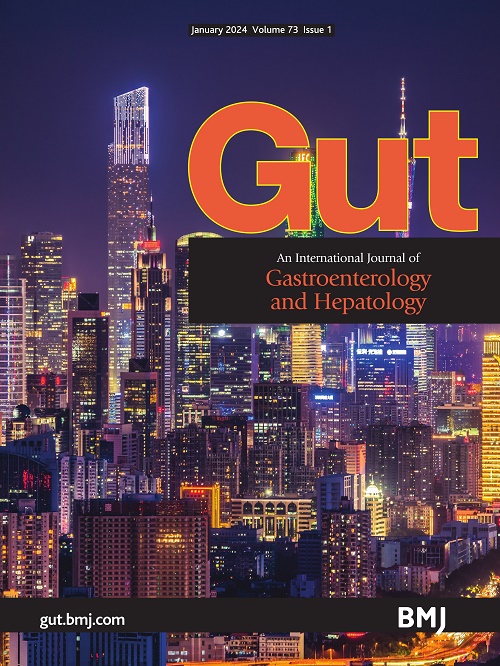Statins for MAFLD/MASH: another brick in the wall while waiting for final answers
IF 23
1区 医学
Q1 GASTROENTEROLOGY & HEPATOLOGY
引用次数: 0
Abstract
I read with pleasure the paper by Zhou et al 1 analysing the long-term clinical outcomes and changes in liver elastography associated with statin usage in patients with metabolic-associated steatotic liver disease (MASLD). This is a population-based study of 7988 patients selected from a total of 17 849 MASLD patients seen in 16 centres in Europe, America and Asia and who had also transient elastography measurements of liver stiffness (LSM). The final cohort included patients >18 years that had at least two LSM, a controlled attenuation parameter denoting steatosis (over ≥248 dB/m), a prolonged follow-up (over 1 year, median 4.6 years), and no other cause of liver disease or excessive alcohol intake. Usage of statins was defined as the consistent use of statins on most days for more than 1 month within a year, which occurred in 3233 patients (40.4%). Patients were considered to have compensated advanced chronic liver disease (cACLD) if the first LSM was >10 kPa, which occurred in 17.2%. The primary outcome was a composite of all-cause death and liver-related events (LREs) (developing cirrhosis decompensation, hepatocellular carcinoma (HCC) or liver-related mortality). In addition, a secondary outcome was the change in LSM, categorised as progression, regression or stable based on observing or not changes in LSM of at least 20% or crossing the threshold of 10 kPa. The authors did Cox regression analysis for examining the association between statin …他汀类药物治疗 MAFLD/MASH:等待最终答案的又一块敲门砖
我很高兴地阅读了 Zhou 等人 1 的论文,该论文分析了代谢相关性脂肪性肝病(MASLD)患者使用他汀类药物后的长期临床疗效和肝脏弹性成像的变化。这是一项以人群为基础的研究,从欧洲、美洲和亚洲 16 个中心的 17 849 名代谢相关性脂肪性肝病(MASLD)患者中选出了 7988 名患者,这些患者还进行了肝脏硬度(LSM)的瞬时弹性成像测量。最终的队列包括年龄大于18岁、至少有两次LSM测量结果、脂肪变性的受控衰减参数(超过≥248 dB/m)、长期随访(超过1年,中位数为4.6年)、无其他肝病病因或过度饮酒的患者。使用他汀类药物的定义是一年内大部分时间持续使用他汀类药物超过 1 个月,共有 3233 名患者(40.4%)使用过他汀类药物。如果首次 LSM >10 kPa,则认为患者患有代偿性晚期慢性肝病(cACLD),出现这种情况的患者占 17.2%。主要结果是全因死亡和肝脏相关事件(LREs)(发展为肝硬化失代偿、肝细胞癌(HCC)或肝脏相关死亡率)的复合结果。此外,次要结果是 LSM 的变化,根据是否观察到 LSM 变化至少 20% 或超过 10 kPa 临界值,将其分为进展、退步或稳定。作者进行了 Cox 回归分析,以研究他汀类药物与肝癌之间的关系。
本文章由计算机程序翻译,如有差异,请以英文原文为准。
求助全文
约1分钟内获得全文
求助全文
来源期刊

Gut
医学-胃肠肝病学
CiteScore
45.70
自引率
2.40%
发文量
284
审稿时长
1.5 months
期刊介绍:
Gut is a renowned international journal specializing in gastroenterology and hepatology, known for its high-quality clinical research covering the alimentary tract, liver, biliary tree, and pancreas. It offers authoritative and current coverage across all aspects of gastroenterology and hepatology, featuring articles on emerging disease mechanisms and innovative diagnostic and therapeutic approaches authored by leading experts.
As the flagship journal of BMJ's gastroenterology portfolio, Gut is accompanied by two companion journals: Frontline Gastroenterology, focusing on education and practice-oriented papers, and BMJ Open Gastroenterology for open access original research.
 求助内容:
求助内容: 应助结果提醒方式:
应助结果提醒方式:


